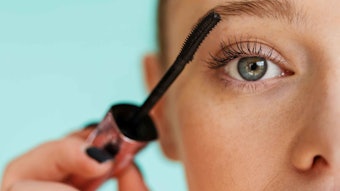In today’s modern world, color is taken for granted. It is difficult to imagine what it must have been like when the only colors available were those in nature. When clothes, utensils and homes were first manufactured in vibrant colors, only the rich could afford them. They were expensive and mostly toxic, since they were largely based on heavy metals. The major users of early colored pigments were artists painting pictures for wealthy patrons. However, the early pigments were not always successful, and today’s great masterpieces have faded over the years.
Throughout history, the desire for colorful fabrics, textiles, buildings and artwork led to discoveries that spawned today’s chemical industry. Among its countless contributions to society, the chemical industry has developed modern colors, in virtually any hue, that are fast, i.e., resist fading, and safe to handle. In the cosmetics industry, these pigments can be used to produce colored cosmetics of truly incredible subtlety, while still covered by strict safety legislation.
Color Cosmetics
Making colored cosmetics is not a simple, straightforward task; colors that work in one medium do not always work in another, or may appear as a slightly different color. This was discovered when artists changed from water, to egg white, then to various oils to mix their pigments. Today, the different bases used for nail polish, lipstick and eyeshadow must be developed with different mixtures of colorants to result in matching shades across a range of products. This is complicated by the way a colored product may look slightly different when viewed under different lighting, whether fluorescent, lightbulbs or daylight. Ensuring that such products still look well-matched under different circumstances is a skilled job, and color matching is no easy matter.
Add to this challenge the fact that in Europe, only colors listed in
Annex IV to the European Cosmetics Regulation EC No. 1223/2009 may be used in color cosmetics. In fact, this recast now provides the definition of colorants as substances that are exclusively or mainly intended to color the cosmetic product, the body as a whole, or certain parts thereof by the absorption or reflection of visible light. In addition, precursors of oxidative hair colorants are deemed colorants.
Hair Dyes
Hair dye is one of the oldest cosmetic treatments, and one of the most difficult to formulate. Despite the chemistry remaining relatively constant, there have been innovations in the technology: from gel networks that develop upon mixing to thicken formulas into an easy-to-apply final form, to special chelants that inactivate copper ions present in tap water to increase hair protection, and overall improvements in hair conditioning.
With regard to hair colorants, it is the aim of the European Commission (EC) to create a positive list of hair dyes. European Cosmetics Regulation EC No. 1223/2009 introduced the provision for this in the new Annex IV. Historically, hundreds of substances with hair-dyeing properties could be used in hair coloring products. In 2003, the EC asked for safety dossiers on the hair dyes used to be submitted to the Scientific Committee on Consumer Safety (SCCS) for review. This committee is the EC’s independent group of scientific experts that advises the EC on the safety of cosmetic ingredients.
The SCCS is currently assessing 117 hair dyes, many of which have already been given positive opinions and been added to Annex III of the EU Cosmetics Regulation as an interim measure. This review is in its final stages and once all the hair dyes have been reviewed by the SCCS, the EU can expect all the hair dyes to be moved to Annex IV of the regulation. These annex entries will highlight whether the dyes can be used in oxidative (permanent) formulations, direct hair colorants or both, along with the maximum concentrations allowed and whether they are permitted for coloring eyelashes and eyebrows.
Adapting Discoveries
As new technologies are developed, cosmetic formulators will find ways to adapt discoveries. For example, the iridescent colors of a butterfly’s wings come from interference patterns caused by the shape of scales on the wing surface in addition to the color of the scales themselves. Scientists can adapt this principle to produce colors that shimmer and change as the skin moves, resulting, for example, in an eyeshadow that is green/lilac and purple/blue at the same time. Just as the desire for color led to the development of the first of pigments, and chemical dyes improved bland and fugitive vegetable dyes, the continued search for novelty leads scientists to explore ways to investigate the expression of color that may be even more vibrant than the old masters could have imagined.







!['I think the biggest game-changer about [MoCRA's] ... requirement for GMPs is how it changes what it means to be adulterated,' Brandi Reinbold, senior manager of global certification for NSF International, said in this sponsored videocast. Register now to watch and learn more. It's free.](https://img.cosmeticsandtoiletries.com/files/base/allured/all/image/2023/11/NSF_Intl_Thumbnail.6554efdc29816.png?auto=format%2Ccompress&fit=crop&h=191&q=70&rect=275%2C70%2C1328%2C748&w=340)


